Pete D. captured this awesome trackside footage at Georgetown Jct. The new track closest to the camera is the original alignment of the Eastbound siding at the Junction and the Branch itself branched off to the far left where the new grass is growing. Purple Line tracks will be in the vicinity of the camera in the future, further changing the landscape forever. NICE catch!
Category Archives: Prototype
Model Rails Magazine, Vol 1, No 1 – The Georgetown Terminus, ca 1957
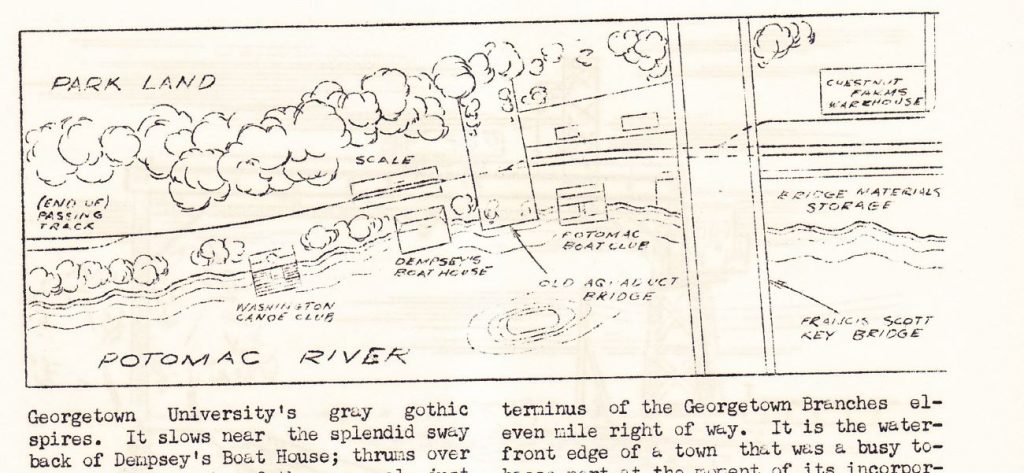
A very lucky find on eBay is this issue of Model Rails Magazine. A small publication that I had never previously heard of, this premiere issue features a thorough article on the Georgetown Branch operations on the waterfront. Not only is it full of details, but it is focused on building a model of the terminal. I’ve scanned it and hope you enjoy this as much as I did!
If anyone knows more about this publication, I’d love to hear about it. I found it fascinating that a publication from the 1950s was so prototype-focused. There were at least two volumes, but I have found no more beyond that run.
A Couple Georgetown Photos from the Barriger Library
Recently the Barriger Library has been uploading images from a very large collection of Thomas Underwood. The images are an absolute boon to fans of the B&O, as the subject matter is spectacular and full of detail. There are images spanning the 1950s to 70s and so far a couple of Georgetown Branch images have been posted.
1912 Historic Footnote: A Wreck in Bethesda
A gentleman named Jack T. in the DC Metro Area – Vintage Photos (MD, DC, VA) Facebook Group (it is a private group.) posted a fascinating snippet from his grandfathers engineers logbook:
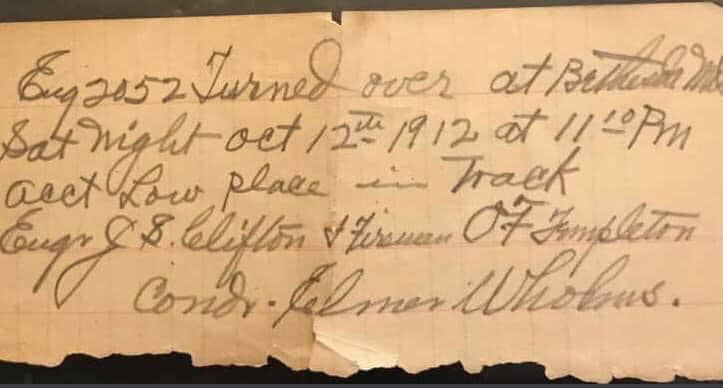
From Jack: “My grandad worked on the B&O RR for most of his career as fireman & engineer. Here is a note he scribbled in 1912 re a train wreck he was involved in in Bethesda. It could be a dangerous occupation.“
The note reads (to the best of my ability): “Eng 2052 Turned over at Bethesda MD Sat Night Oct 12th 1912 at 11:10 PM acct Low place in Track, Engr J.S. Clifton + Fireman O.T. Templeton, Condr. Elmer Wholmes.” There is a lot to take in here. First up, the B&O line into Bethesda had only recently been completed, some time between 1908 and 1910 when it fully opened. At this point, Bethesda was very rural and there wasn’t much industry. The fact that the engine turned over (assuming on its side) is really striking. I wonder if it was due to a washout. The fact that it happened at 11:10 PM is also surprising to me, as I did not know they ran so late at night! But the MOST interesting thing to me is the engine number. I am constantly trying to decipher what power was running on the line in the early years, and here I have an actual locomotive number.
So here are the details, which I pulled from the B&O Steam All-Time Roster by W. Edson. Engine no 2052 was a 4-6-0 class B-19a built by Baldwin Locomotive Works in August of 1901. It was dropped from the B&O roster in 1933. Here is a photo of sister loco, 2046 in Glenwood, PA, for reference:
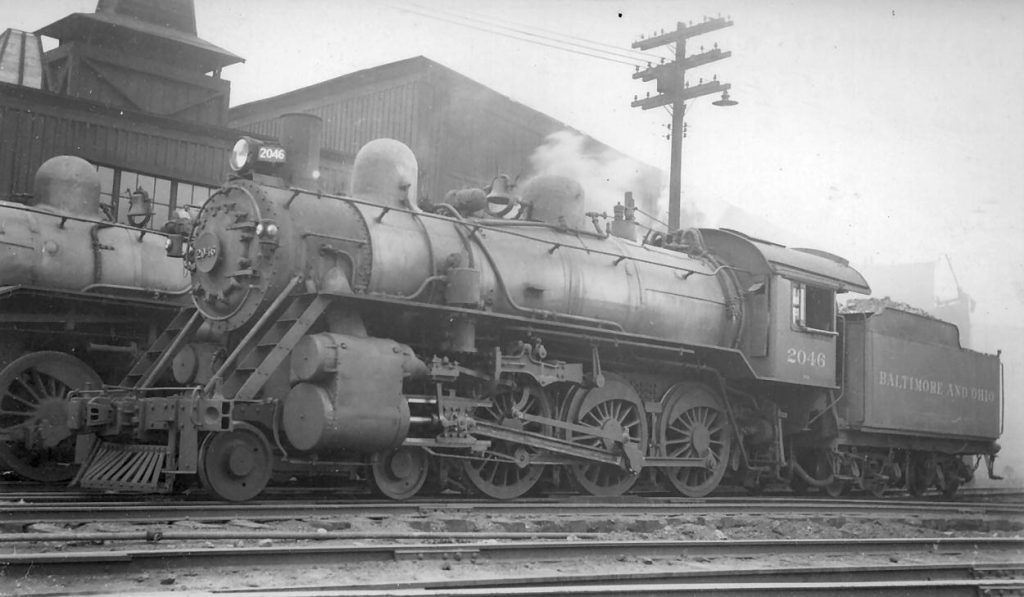
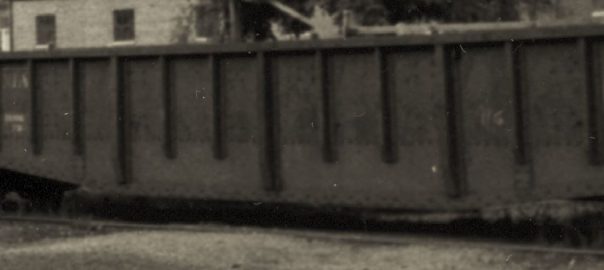
Freight Car Find: Episode 1 – A New Series
I have been spending a really large amount of time lately trying to identify freight cars in old photos of the Georgetown Branch. As a modeler who is striving for authentic representation and operation, I am driven to figure out what traffic on the GB was like; where it came from and where it was going and who was shipping it. I don’t have a collection of train orders or waybills, only some records, maps and photos. Much of my study revolves around the industries that I am familiar with whether through first-hand account, B&O Form 6 data, old maps indicating what industries existed where and when, and photos which show the lay of the land and the freight cars on the rails.
Although seeing a freight car in a photo does not necessarily translate into knowing the details of shipments and carriers, it does provide some detail and context to help guide me as I make up my own model railroad roster and operational narrative. Seeing a Great Northern boxcar on a siding at a lumber yard, one can reasonably assume that it is carrying lumber from the Pacific Northwest. Seeing a tank car sitting on a fuel dealer siding, one can reasonably assume it is carrying fuel oil to be unloaded in a nearby storage tank. Seeing a B&O boxcar on the main line of the branch means very little; but it provides a reference point and a data point for my own model research and acquisition.
So with this new series I am going to take a closer look at the freight cars in the old photos I have and try to identify them as best I can. I am not trying to write a detailed article, but rather make a positive ID and gather some details, and perhaps some references. My end goal is to find HO scale models for these cars so I can represent them on my model railroad. I hope you enjoy.
Kicking it off, let’s start with a fun one.
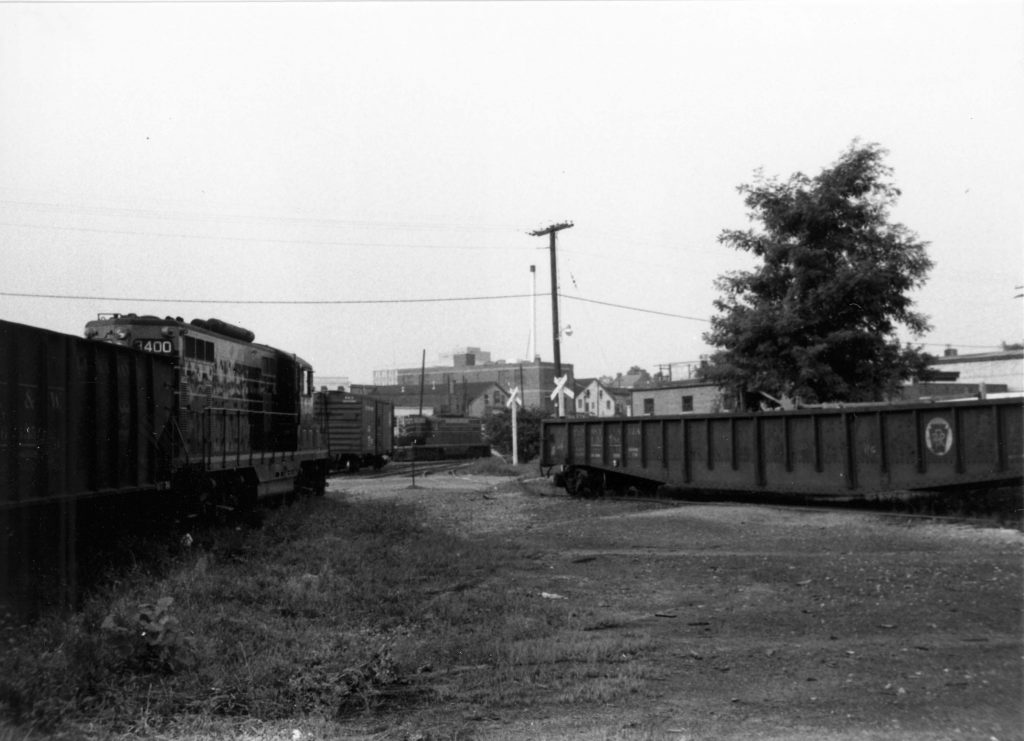
Let’s start with the boxcar, furthest away, just in front of GP9 3400:

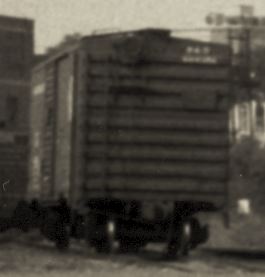
It’s a B&O boxcar (note the “13 Great States” herald on the far right). The car has 4/5 corrugated ends and Youngstown doors. Note the tack board placement on the end and door. From what I can tell this is an M-55 class variant, perhaps an M-55c, which I understand had those distinctive squared-off corrugated 4/5 ends. Ted Culotta has a nice blog post about the M-55a and the B&O RR Historical Society, B&O Modeler, has a nice article about the M-55h in the “orange comet” scheme. I found a few other photos which may give more insight: M-55? (Sentinel Service) 466054, M-55h 467673, M-55c 466350, . Accurail offers an M-55a model. as well as an M-55 trio of “Time Saver” schemes. Not sure of the details on this car. Sunshine Models also produced an M-55h kit, which you can see in the B&ORRHS article linked above. It sounds like National Scale Car has an M-55 kit in the works, which I eagerly await.
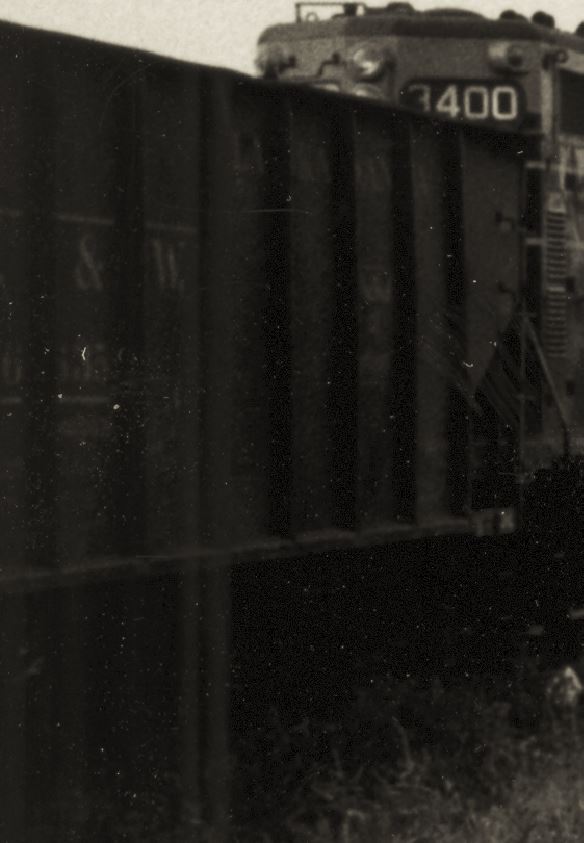
Next up is this DL&W hopper. Note, there is a vertical artifact on the photo which appears as two or three vertical stripes. This appears to be an 8-panel hopper. (10, if you count the two end panels where the slope is located.) I know little about DL&W so it makes the challenge even greater. I have spent a good amount of time digging around online and have yet to find some good reference material. A photo on the RR-Fallen Flags site appears to be a close match, but it’s got u-channel ribs at each end, where the car in the photo does not appear to. The paint scheme reveals a number xx6535, perhaps. Note the spacing of the LA | CKA | WAN | NA and the “The Road of Anthracite” herald. Bluford Shops produced an 8-panel, 2-bay hopper which to me VERY closely resembles the prototype in the photo I have. My search for an HO scale representation is ongoing; any help finding a source would be MUCH appreciated!
Last up is this gondola, spotted on the Eisinger Mill & Lumber siding:

This one is pretty neat. Thankfully, there is a fantastic resource for PRR freight cars: the PRR Freight Car Page. Studying the design of this car; the ribs, their length, the lettering and the shape of the car, I determined this is a PRR class G26 gondola. A personal guess at the number, 439586, matches with the prototype info being part of car nos. 439009-440709, AAR class GB, built in Altoona between 1930-31, measuring 65’6″ inside length, 20 panels. Thankfully, this car was produced in a kit form by the now-defunct Eastern Car Works a number of years ago, and I picked up a very nice completed model via eBay last month that will really go well on my layout (below). As I plan on modeling the construction of the Whitehurst Freeway, there will be plenty of girder loads to be brought down the Branch in this neat car!

I hope you’ve enjoyed this first installment of FCF. I have so many more freight car sleuthing stories to share and welcome any and all input you all may have on helping me solve some of these mysteries.
EDIT: I recently discovered the MyHeritage photo colorizer via Chris Adams’ wonderful Valley Local blog. This is an AI-based tool that does a darn decent job of colorizing black & white images. Now, it’s just for fun and nothing is meant to be perfectly accurate, but sometimes a bit of color helps the brain put things in context. Anyway, here’s what the subject image looks like when run through the colorizer:

eBay Purchase: 1943 Georgetown Jct, “NY-CHI Express” Print
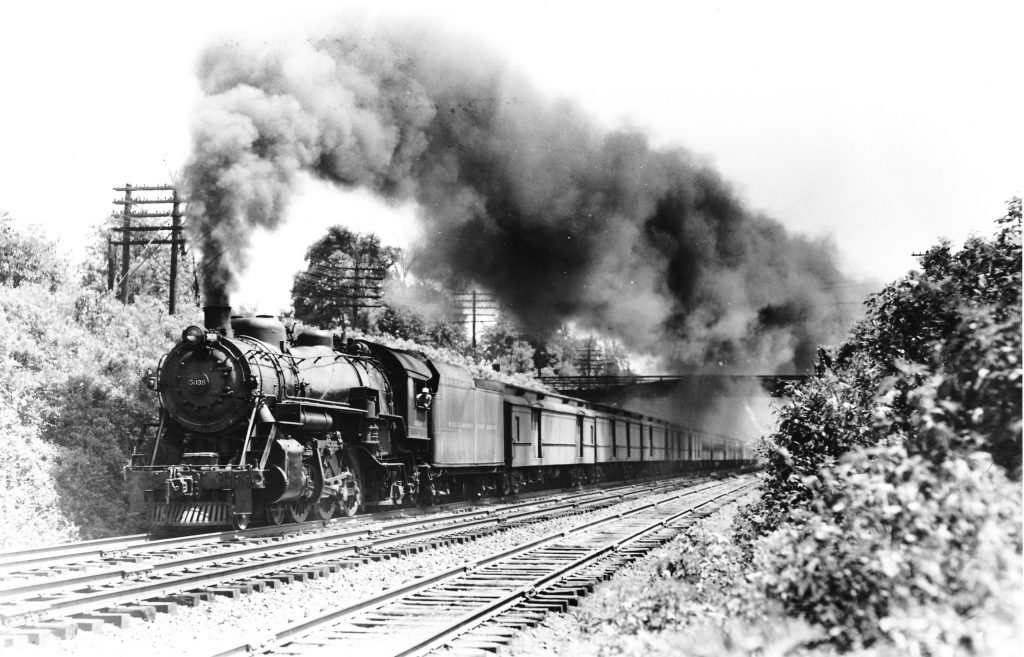
I picked up this print off of eBay last week and was pleased at my purchase. I try my best to scoop up any Georgetown Branch-related photos whenever possible, as they are relatively rare and help me with my research. Even somewhat plain photos like this are helpful, as they show track arrangement, landscape, structures, such as the Talbot Ave. bridge seen in the background. It might seem small, but here I have a nice view of the railings, which I hadn’t seen before. Or had I…
Once I scanned this photo, and looked closely at the caption, a bell began to ring in the back of my mind. I realized that maybe I’d seen this image before. Maybe it wasn’t so long ago. And I was right. Three years ago, to be exact. I even posted about it to this blog:
It seems I purchased a negative of this very photo. Now, here’s where it gets weird. The negative I purchased is in rough shape. It’s a medium format and has tons of scratches. Is it a dupe? Is it a proof of some kind? Note the dust and scratches in the negative, and compare that to the print I picked up this week! Night and day. Is the negative I have an original that was just used and abused? It’s hard for me to say, but it’s an interesting story. I don’t regret buying the new print but I may have been more hesitant. Thankfully, it wasn’t too expensive and I can add it to my collection as a “better” print copy of the Fales (?) negative I already have.
New Purple Line Bridge Installed Across Connecticut Ave
The B&O crossed Connecticut Ave at grade for nearly 97 years. The Purple Line project recently installed the new bridge across the roadway, which sits atop the original B&O crossing. Avid fans will recall that Connecticut Ave. was the original terminus for what would become the Georgetown Branch, as the railroad served the Rock Creek Ry. power plant and a growing industrial area including T.W. Perry and other merchants.
Here is a photo of unknown origin showing the crossing ca the late 1800s:

I previously posted a time lapse video of this bridge’s installation.
The New Purple Line Bridge Across Rock Creek
In this view, we get a shot of the new bridge spanning Rock Creek where the long, high B&O trestle once stood. I imagine the worker is standing on the forms for the Capital Crescent Trail pedestrian bridge which will parallel the Purple Line. The bridge is significantly lower than the original B&O trestle, as they have lowered the grade here enough to allow the tracks to pass beneath the nearby Jones Mill Rd.
When Santa Came to Chevy Chase by Train
I have stumbled over some pretty neat stories pertaining to the Georgetown Branch, but the few Christmas-related ones always delight me. I think it’s really interesting to see how the Railroad viewed these events as public relations stunts, but to the kids who participated in them back then, they were probably awesome examples of Christmas wonder. A while back I reported on the National Christmas tree coming to DC via the Georgetown Branch, where in Georgetown it was met with fanfare before being offloaded on to a truck for the trip to the National Mall. Even Santa himself attended the event! But this particular example is hyper-local and really special, in my eyes. A recent Facebook post rekindled my interest in this event; two newspaper clippings highlighting the event. Here is what I know.
In 1954 Ms. Virgina Bourquardes contacted the B&O, requesting a boxcar to be placed at Chevy Chase Lake, where the Georgetown Branch crossed Connecticut Ave. and where a small passing siding and team track was located. It seems the local Chevy Chase Lake Shopping Center Association (The shopping center was located just North of T.W. Perry, on the East side of Conn. Ave.) had come up with the idea to promote their businesses. Upon seeing the PR value in participating in such an event, the B&O seemingly eagerly offered up not only a boxcar, but a platform with steps, power and offered to repaint the car into “first-class condition for advertising purposes.” (more on this, later) Here is how the plan was to go down:
The B&O would spot the car in the Bethesda yard on Nov 29th so the Chevy Chase folks could decorate it, install the floodlights and wiring, along with “Santa Claus’ workbench, etc.” They also inquired about the person who would ride IN the car from Bethesda to Chevy Chase, dressed as Santa! The B&O indicated that the Georgetown Local would move the car on the afternoon of Dec 1 from Bethesda into position at Chevy Chase Lake. They politely requested that the day following that the car would be cleaned out so as to permit the Railroad to return it to revenue service. In the documentation I have, the gentleman who volunteered to play Santa was Mr. Gerard Moynihan of Silver Spring, MD who had to sign a notarized release in order to ride in the freight car.
The Railroad promptly selected a car; B&O 467293 from the pool at Brunswick, MD, which was an all-steel 40’6″ boxcar class M-55ha, built in 1947. The foreman indicated it had all wood sides and floor and would be repainted for the event. Here is a link to B&O 467673, a similar M-55h class boxcar, which appeared in Parkersburg, WV Aug 1, 1954. Some of these M-55h cars received the brilliant blue and orange “Orange Comet” Time-Saver scheme; I can only hope that 467293 was! 🙂 Another Time-Saver Service scheme was less fancy and more likely an option. In Further instructions to move the car any time after Nov 26th to Bethesda were made. Unfortunately I don’t have any photos of the car, nor do I know what paint scheme it was painted in. The car was to be moved from Bethesda to Chevy Chase to arrive between 1 and 2pm on Dec 4th. The business association promoted the event through local papers and radio spots.
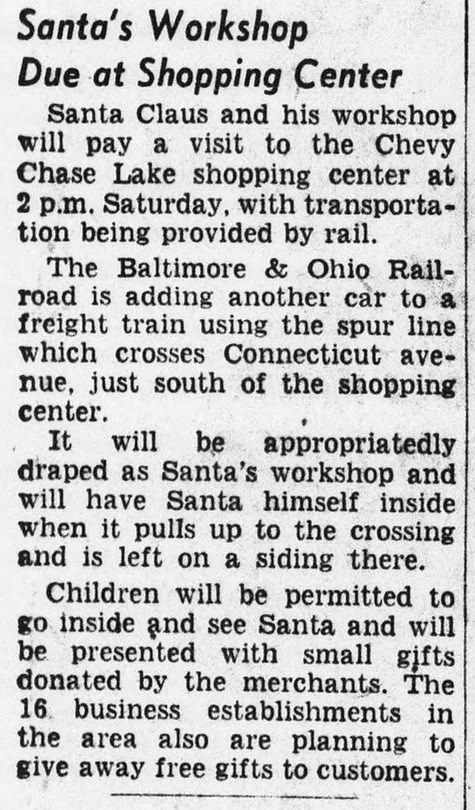
I can only imagine the excitement of the crowd as the Local came trundling up from Bethesda to Chevy Chase, horns blaring, arms waving. A newspaper article details the event, saying “Santa arrived in his especially equipped workshop aboard a freight car on a train from Bethesda. With whistles blowing and children waving a welcome, the train stopped at the Connecticut Avenue siding at 1 p.m.” More details are in the article, below:

According to the article, it was a great success in the eyes of the shopping center officials, hoping it would continue in future years. It is unclear as to whether or not it did. In the correspondence I uncovered from 1955, the Railroad initially denied the request, stating a shortage in equipment would prohibit them in sparing a boxcar for the duration. They do, however, indicate that Santa would this year ride on the Caboose of the Georgetown Local! I didn’t find any further documentation or information regarding this move, but I think it would have made for an equally exciting event. Maybe some photo or documents will reveal the rest of the story.
I have made a PDF document of the file I uncovered in the B&ORRHS archives which you can download here:
I hope you have enjoyed this brief story and if you know of any photos or stories from those events, please do share!
Side note: The B&O Modeler magazine did an article on these cars. Link here.
Dalecarlia Water Treatment Plant ca 1974
In a wonderful photo posted to the CSX “Cap, Met, and OML” subs, Railfans Facebook group by Ray Soderberg, we have a look at the track arrangement at the water treatment plant ca May, 1974. This arrangement was implemented when the facility underwent various upgrades.
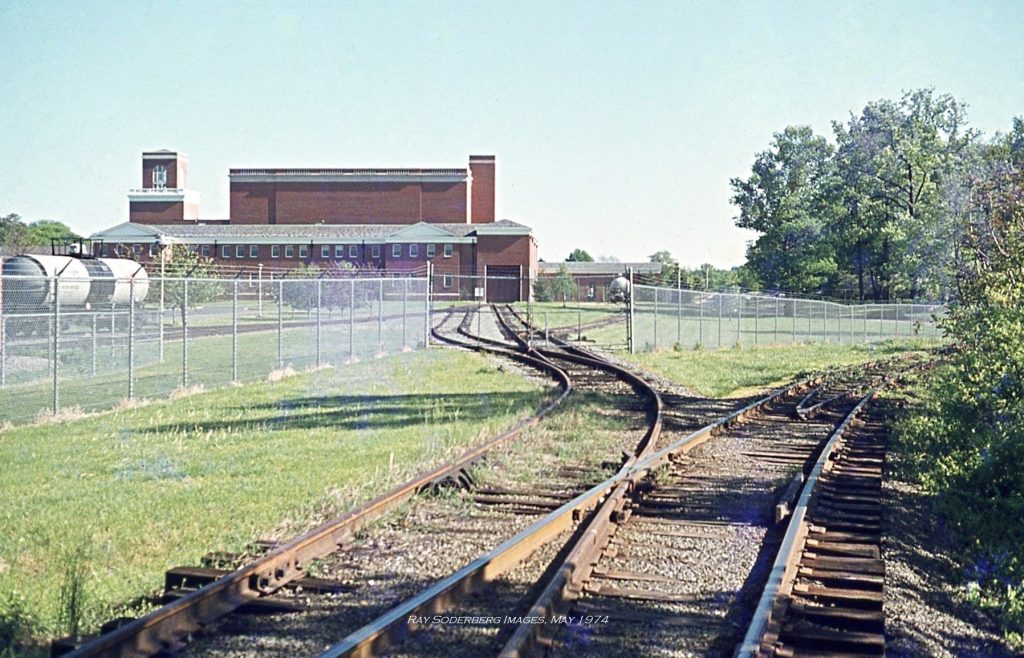
For me, it was a real eye-opener. I had never seen this arrangement and it is really cool to see. Remnants of the unloading facility (where the tank car is spotted in the distance, in the center, are still there today: https://goo.gl/maps/PEi6kpCXfrbBcssu9

